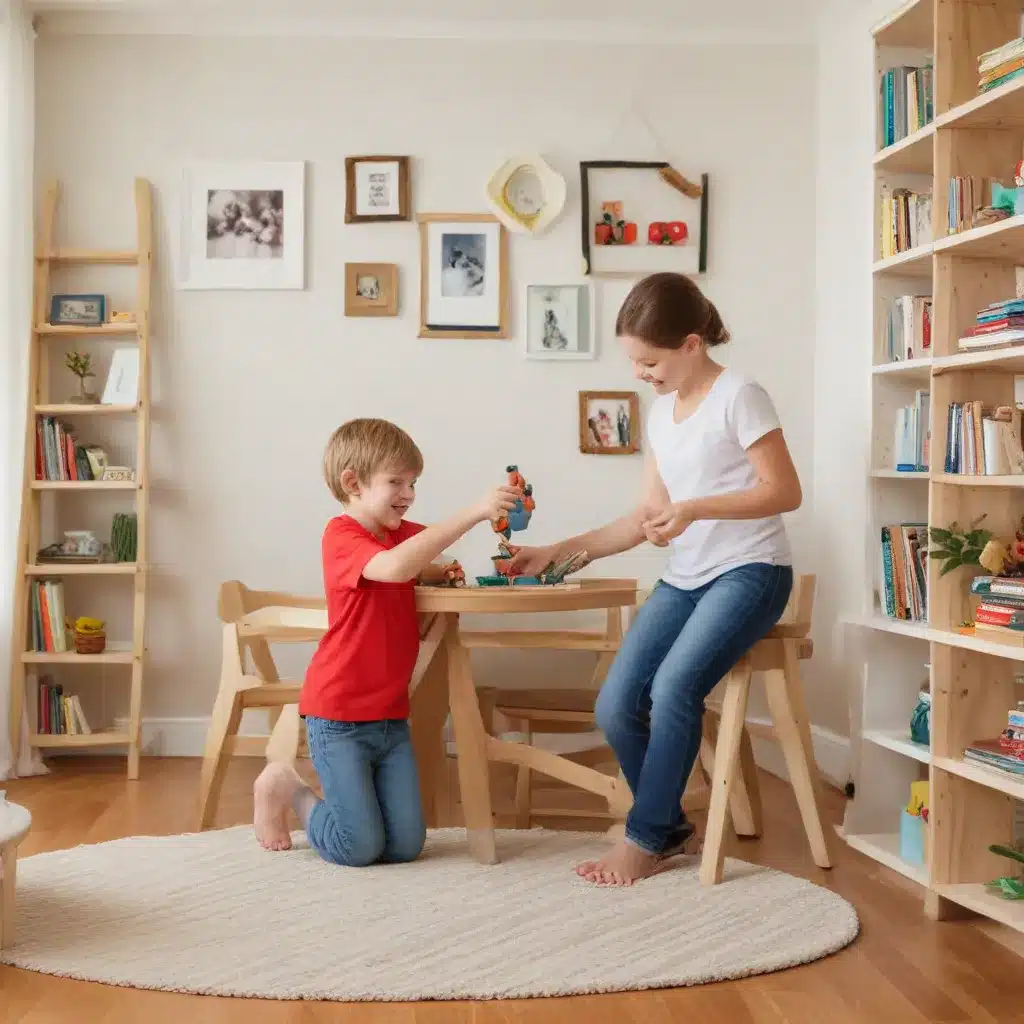
When it comes to renovating a home for a family, the priorities shift beyond just aesthetics – the functional layout, durable materialities, and playful elements all become crucial considerations. As an experienced home improvement consultant, I’ve seen firsthand how thoughtful design can transform a space into a haven that meets the needs of both parents and children.
Family-Friendly Design Considerations
Functional Layouts
The heart of a family home is often the open-concept kitchen, dining, and living area. These hubs of activity require careful planning to ensure they support the family’s everyday flow. Maximize natural light, establish sightlines to outdoor play areas, and incorporate ample storage for toys, books, and games. Flexibility is key – a room that starts as a playroom can easily transition into a homework nook or media room as kids grow older.
Bedrooms also demand strategic placement, with younger children’s rooms situated closer to the master for easy monitoring, while older kids may prefer a designated “zone” with a bit more independence. Thoughtful bedroom layouts can accommodate evolving needs, from toddler cribs to teen lounges.
Durable Materialities
When designing for families, durability trumps delicacy every time. Opt for polished concrete or tile flooring that can withstand spills and scuffs, and choose non-slip surfaces to prevent accidents. Fabric selections, whether for upholstery or window treatments, should be easy to clean and withstand frequent use. Even built-in cabinetry should be made from materials resistant to chips and scratches.
The kitchen, in particular, needs to be a high-functioning space that can handle the chaos of family life. Maximize circulation between fixed elements, incorporate a breakfast nook or butler’s pantry, and strategically locate the trash bin to keep things tidy. Don’t forget to include a dedicated homework or study zone to keep an eye on kids’ activities.
Playful Elements
While functionality is essential, injecting playful elements can make a family home truly shine. Incorporate a second living area that can double as a toy-filled playroom, complete with built-in storage and craft/activity zones. A mudroom near the back entrance provides a designated spot to remove muddy boots, hang backpacks, and store sports gear.
Bring the outdoors in by positioning the pool or play areas with clear sightlines from the main living spaces. Display kids’ artwork and achievements proudly, whether on a dedicated notice board or an entire gallery wall. And don’t forget to plan for the furry family members, carving out designated spots for their food, toys, and beds.
DIY Renovation Strategies
Budget-Friendly Upgrades
Renovating with a family in mind doesn’t have to break the bank. Repurpose existing furniture or look for secondhand gems that can be refinished. Customize IKEA pieces to create built-in storage solutions or game-ready areas. And don’t be afraid to get crafty – DIY window treatments, artwork frames, and toy organizers can infuse personality without draining your wallet.
Customizable Solutions
When it comes to family-focused spaces, flexibility is key. Modular furniture like sectional sofas or movable play zones allow you to adapt the room as needs change. Built-in bookshelves with a mix of open and closed storage provide both display and concealment options. Invest in multifunctional pieces that can serve double-duty, like a daybed that also accommodates overnight guests.
Eco-Friendly Practices
Raising a family means being mindful of one’s environmental impact. Opt for low-VOC paints, sustainable flooring, and energy-efficient appliances to create a healthier indoor environment. Repurpose or upcycle existing materials wherever possible, and seek out locally sourced, recycled, or reclaimed products. Prioritize natural lighting and natural ventilation to reduce reliance on energy-guzzling systems.
Kid-Centric Spaces
Engaging Play Areas
Carve out dedicated zones for imaginative play, whether it’s a Montessori-inspired play nook, arts and crafts station, or game-filled hangout. Incorporate open-ended toys that grow with your kids, and provide accessible storage for easy cleanup. Designate a soft, cozy area for reading, lounging, and quiet activities.
Educational Nooks
Weave in subtle learning opportunities throughout the home. A low bookshelf stocked with age-appropriate reads encourages independent exploration. Set up a child-sized table and chairs for hands-on projects or homework. Display educational wall art or interactive displays to spark curiosity and supplement classroom learning.
Cozy Hangout Zones
Beyond the primary living areas, create secondary gathering spaces that cater to varying ages and interests. A bonus room or finished basement can serve as a game room, media lounge, or teen hangout, complete with comfortable seating, built-in storage, and engaging activities. These versatile zones allow the whole family to spend quality time together or retreat for solitary pursuits.
Holistic Home Transformation
Seamless Integration
The key to a successful family-focused renovation is ensuring a cohesive, harmonious flow throughout the home. Thoughtful zoning separates living, sleeping, and activity areas, while maintaining visual connections. Coordinated color schemes, consistent materiality, and complementary furnishings tie the spaces together, creating a unified environment that feels intentional and inviting.
Adaptable Arrangements
As families evolve, so too must their living spaces. Design with flexibility in mind, allowing rooms to serve different functions over time. Convertible furniture, modular storage, and multipurpose nooks enable smooth transitions, ensuring the home can adapt to the changing needs of growing children.
Multigenerational Appeal
In an increasingly interconnected world, many family homes must accommodate multiple generations under one roof. Striking a balance between private and shared spaces, as well as accessibility considerations, creates an environment that caters to all ages and abilities. Thoughtful design decisions, such as intergenerational activity zones and adaptable bathrooms, foster a harmonious, inclusive living experience.
Renovating a family home is a complex and deeply personal endeavor, but with the right strategies and a focus on functionality, durability, and playfulness, you can transform your living spaces into a true oasis for all. By blending budget-friendly DIY projects, customizable solutions, and eco-friendly practices, you can create a kid-centric yet stylish home that will grow and evolve with your family. For more inspiration and renovation insights, be sure to visit Reluctant Renovator.



